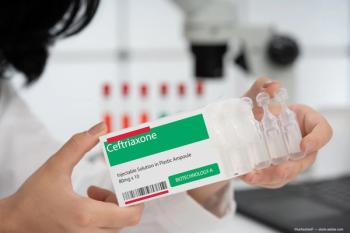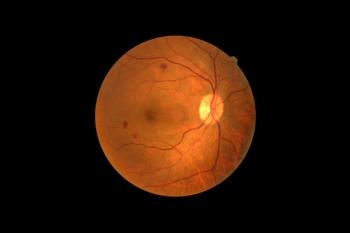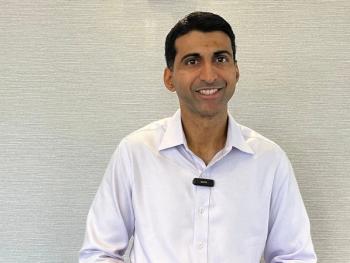
This noninvasive imaging tool reveals early brain pathology through the eye, promising faster and more accurate diagnoses as highlighted at the Heidelberg 2025 International SPECTRALIS Symposium – And Beyond (ISS).

This noninvasive imaging tool reveals early brain pathology through the eye, promising faster and more accurate diagnoses as highlighted at the Heidelberg 2025 International SPECTRALIS Symposium – And Beyond (ISS).

Findings presented at the Heidelberg 2025 International SPECTRALIS Symposium — And Beyond (ISS) suggest detailed structural data could better inform therapeutic targeting and monitoring.

Improved axial resolution allows clearer visualization of early atrophic changes, including iRORA vs cRORA differentiation, as shared at the Heidelberg 2025 International SPECTRALIS Symposium – And Beyond (ISS).

From basal laminar deposits to foveal centering, a new framework refines what clinicians see—and what they treat—in outer retinal disease, as presented at the Heidelberg 2025 International SPECTRALIS Symposium – And Beyond (ISS).

EssilorLuxottica and MidEuropa recently entered into an agreement that will allow EssilorLuxottica to acquire Optegra, building upon its med-tech strategy.

Amneal Pharmaceuticals received FDA approval for its prednisolone acetate ophthalmic suspension, a steroid eye inflammation treatment referencing Allergan’s Pred Forte, with a US launch planned for Q3 2025.

Lamivudine could provide an oral option to more effectively treat DME at a lower cost to patients

Harrow expects BYQLOVI to be commercially available in the fourth quarter of 2025.

The novel preservative-free eye drop therapy for glaucoma aims to improve IOP control and patient adherence with a fixed-dose combination.


Compared with penicillin, investigators reported no significant differences in the incidence of ophthalmologic manifestations among patients treated with ceftriaxone.


Cabozantinib is a vascular endothelial growth factor receptor tyrosine kinase inhibitor, a drug used as a therapy for several malignancies.

FDA noted that the US phase 2 trial may serve as 1 of the 2 pivotal trials required for NDA filing.


With 35+ lectures, a NASA keynote, and a river cruise through historic Heidelberg, this year’s symposium blends science and scenery

Siegfried Priglinger, MD discussed research he presented focused on pediatric patients with inherited retinal diseases with an emphasis on studies into the RPE65 gene.

The gift will be used to treat and potentially cure eye diseases such as macular degeneration and glaucoma, increase focus on basic science, and harness artificial intelligence to revolutionize vision care.

TGFBI corneal dystrophy is a group of genetic eye disorders caused by mutations in the TGFBI gene, resulting in abnormal protein buildup in the stromal layer of the cornea.

Mark Daly discusses the transformative role of AI in ophthalmology, highlighting its potential to enhance patient care and streamline physician workflows.

Jay Chhablani, MD, explains how 3D choroidal vessel segmentation transforms ophthalmology, enhancing disease diagnosis and treatment through advanced imaging technology.

The TEASE-1 trial reveals gildeuretinol's potential to reduce vision loss in Stargardt disease, offering hope for future treatments.

On the heels of the drug's FDA approval, clinicians weigh in on acoltremon’s (Tryptyr) novel mechanism of action and its potential to address unmet needs in dry eye care

The ELEVATUM study explored faricimab's effectiveness in treating diabetic macular edema among underrepresented minorities, showcasing significant visual acuity improvements.



Researchers share that perfluorohexyloctane eye drops offer rapid relief for dry eye disease, enhancing patient comfort before cataract surgery.

The preservative-free, contact lens–friendly drops have been formulated to provide hydration and comfort for dry eyes in a multidose bottle.

A study reveals attrition rates in patients with geographic atrophy on complement inhibitor therapies, highlighting the need for improved treatment adherence strategies.